The Distinctions of Temporary and Permanent Guardrail and Why They Matter
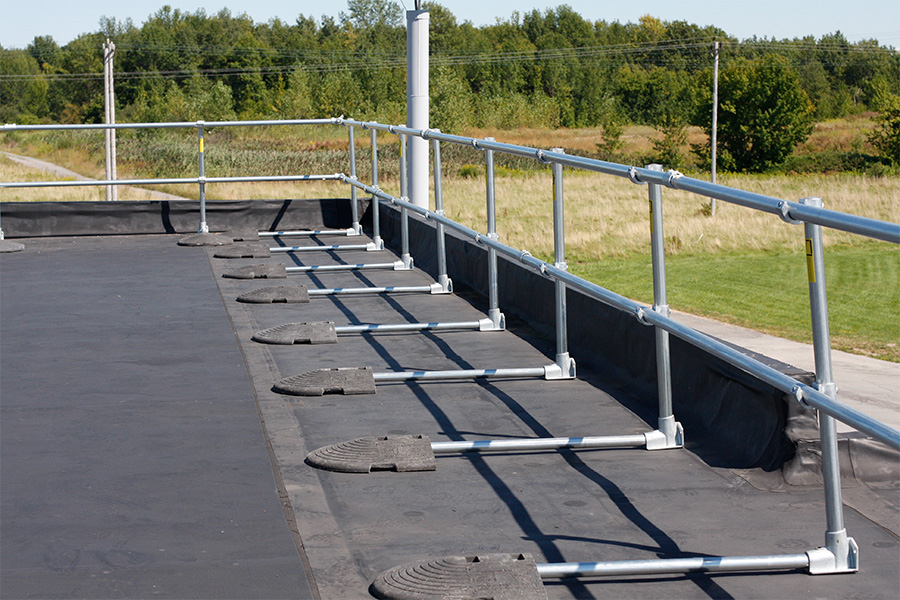
You could be using the wrong guardrail.
I’ve heard the word temporary used in several ways for guardrail, and not all of them correct. The definition of temporary is “lasting for a limited period of time”.
So, then why is a guardrail that the manufacturer calls temporary used as permanent fall protection? Or why is guardrail that’s designed to last decades called temporary?
I do get why, in some sense. However, in this article, I’m going to show you how to spot the difference and choose the right guardrail for the job.
What does OSHA say about Temporary or Permanent Guardrail?
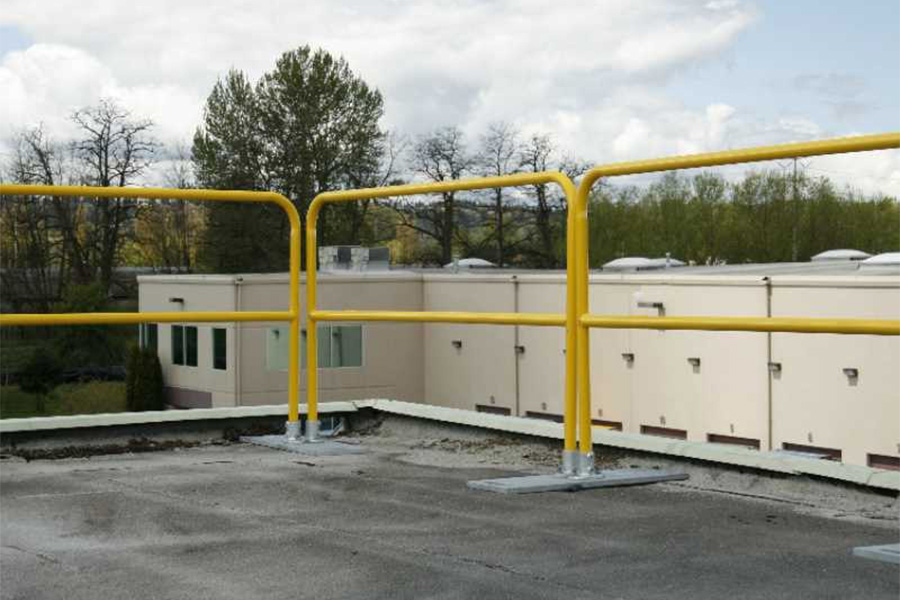
Nothing.
OSHA does have a lot to say about guardrail. However, there is no distinction between temporary and permanent.
It doesn’t matter how long you need the guardrail for, there are certain immutable requirements that OSHA has. Here are a few for reference:
- The top rail needs to be 42 inches from the walking/working surface
- The top rail needs to be able to withstand a 200-pound force
- A midrail is required so that a sphere of 19-inches cannot pass through
- The midrail needs to withstand a 150-pound force
We have an OSHA Guardrail Guide that goes into detail about the OSHA requirements for guardrail if you want more information.
How do you know if a guardrail is temporary?
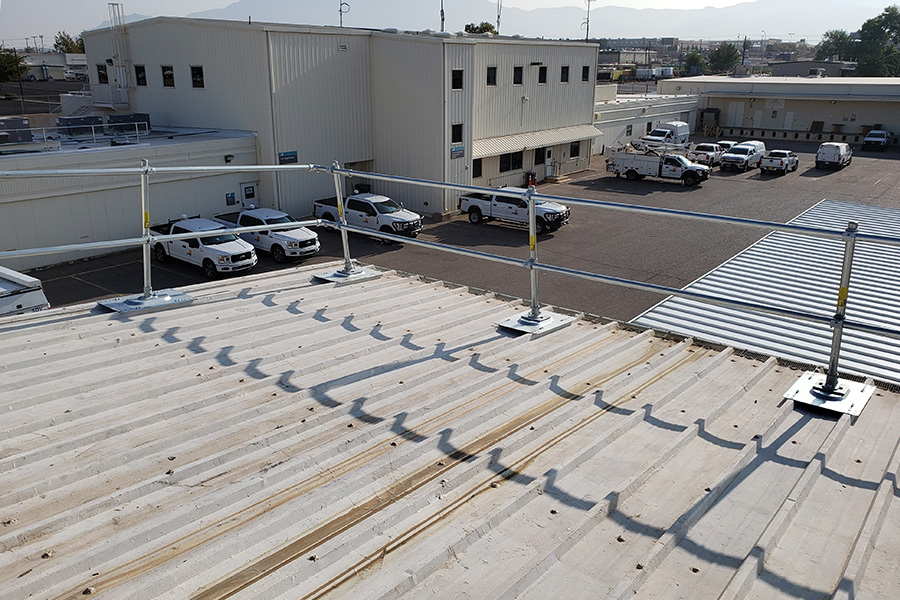
There is no distinction according to OSHA. So, it is up to you to determine when a guardrail should be used on a temporary or permanent basis.
There are several factors that will help you determine if a guardrail is temporary.
The material used in the creation of the guardrail will be a primary factor. Using 2x4s or 2x6s to create the posts or rails of a guardrail is a strong indicator that the guardrail is not designed to last for years. If the guardrail is made of steel, then consider how that steel will be protected from the elements and other environmental concerns.
I’ve seen painted yellow guardrail that rusted out after a few years of use. Using guardrail that is rusted at the joints invites a failure point that could cost someone their life.
Sometimes, the roof type will determine if a permanent guardrail is required. Flat, rubber roofs and other similar flat roofs have multiple options for guardrails. However, pitched metal roofs require permanent guardrails because the guardrail needs to attach to the roof to be compliant.
Another good indicator is how easy it is to disassemble. I’ve worked with customers who had their safety yellow, non-penetrating guardrail unpinned because a subcontractor wanted to get to the other side, didn’t follow procedure, and forgot to fix it.
Thankfully, we caught it and were able to get a fix in place. But can you imagine what could have happened if someone thought the guardrail was safe and fell into it?
Non-penetrating is not synonymous with temporary
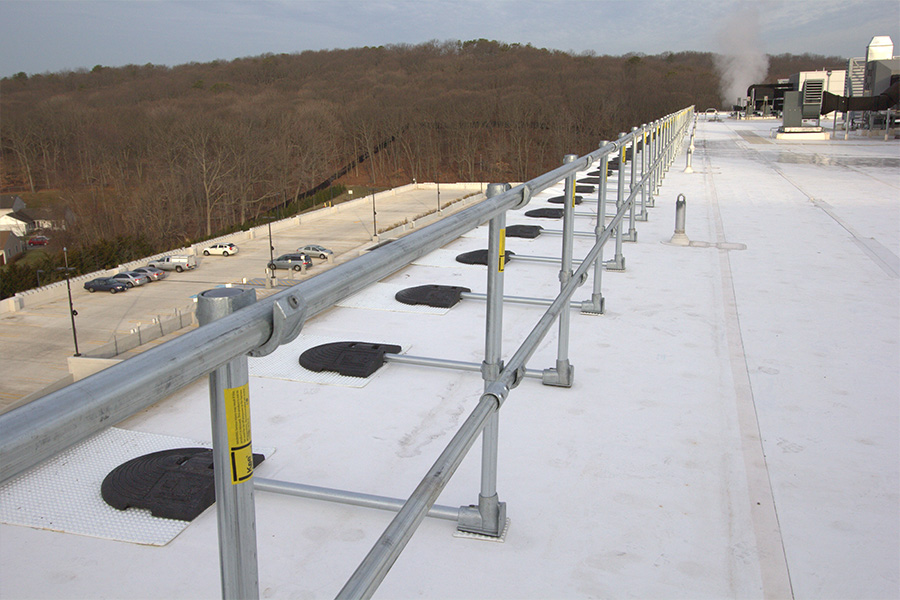
Here is something that I want to clear up. Often, when clients first call in, they would ask for temporary railing. As we spoke, I came to realize that they meant non-penetrating. There is an important distinction between the two.
Non-penetrating guardrail means the railing does not have to mount to the structure to comply with OSHA regulations. Non-penetrating guardrail can be both temporary or permanent.
Kee Guard is a perfect example of a permanent and non-penetrating guardrail. It is made from hot-dipped galvanized steel with recycled PVC weights.
Guardian’s Safety Yellow G-Rail is an example of temporary and non-penetrating guardrail. It uses welded steel rail sections that are covered with powder coating. The instructions even say to take it down when winds exceed 70 mph.
Make sure that the non-penetrating guardrail that you choose to use will last the length of time that you need it to without being easily moved in a moment of carelessness.
Should You Use a Temporary or Permanent Guardrail?
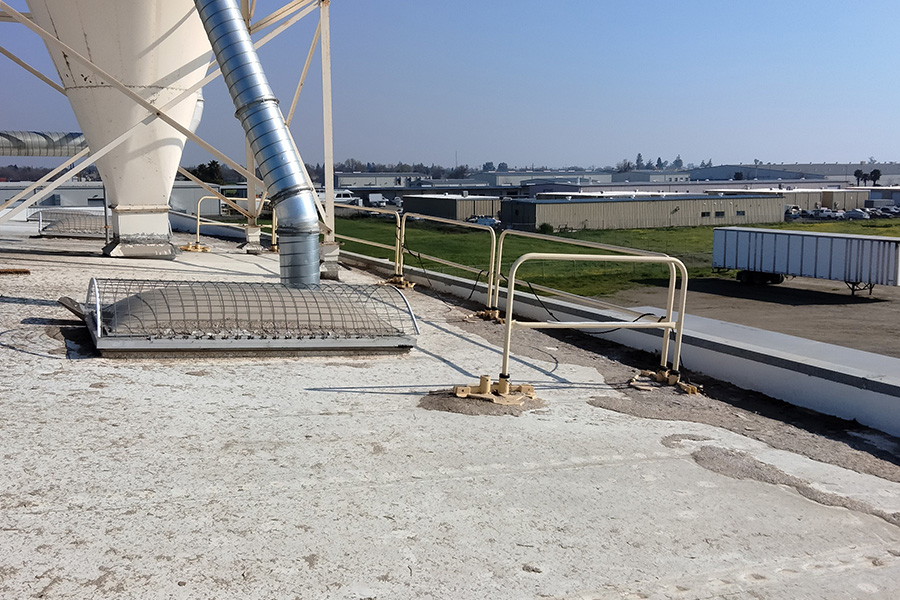
Because OSHA doesn’t make a distinction, you have to. Therefore, the answer to this question depends on how you plan on using the guardrail.
The amount of time that you need the guardrail for is important. If the job is a one-time thing and you’re only on site for a few months, then a temporary guardrail is ideal. However, if this is for an HVAC that needs to be inspected and maintained on a regular basis, then a permanent guardrail should be used.
Another important factor is how often the guardrail needs to be moved. If the guardrail needs to be moved on a regular basis, then temporary is the obvious choice.
Environmental concerns should also be considered. High winds could eliminate the ability to use a temporary guardrail. Corrosive environments could cause temporary railings to be compromised sooner than expected. In these cases, a permanent guardrail that is designed to withstand these elements would be the better choice.
OSHA is also not the only regulation you may need to comply with. There are local codes and ADA regulations that may need to be considered that will determine the type of guardrail you will need.
Ultimately, will the guardrail that you choose be able to comply with all necessary regulations that apply to your specific situation?
An Example of When NOT to Use a Temporary Guardrail
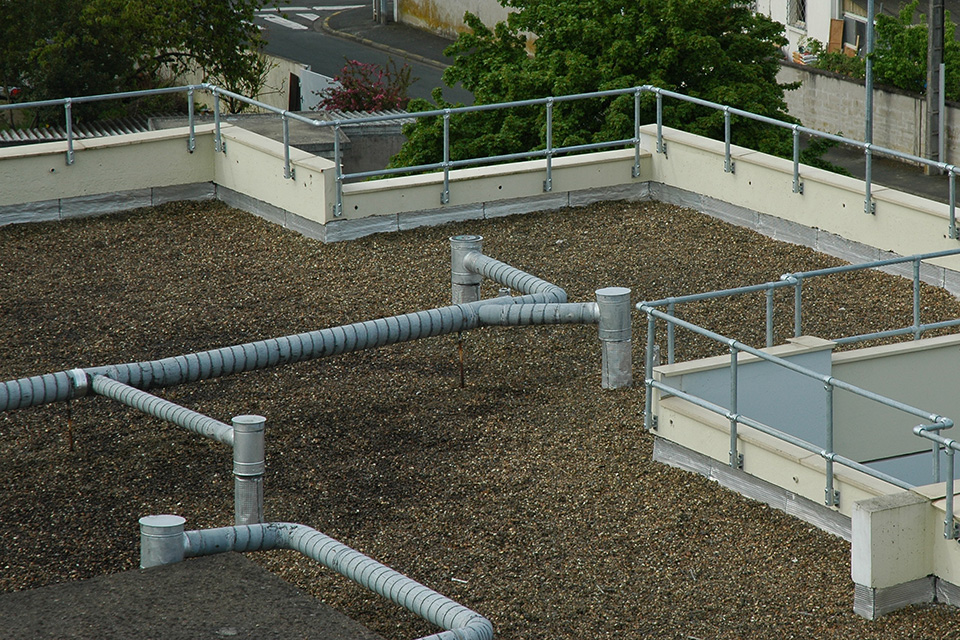
To help demonstrate what I mean, let’s look at an example.
Let’s say your office roof has an HVAC. It’s in good condition and just needs routine inspection and maintenance. You also have a 12-inch-tall parapet around your roof.
In this case, you have a few options available. You could mount a permanent guardrail to the parapet. You could use a non-penetrating guardrail along the edge. Or you could use a temporary parapet clamp guardrail.
The parapet clamp guardrail would be the cheapest and easiest to install. You can use locally sourced lumber as the rails. Viola! Area protected.
Not so much.
The 2x4s will deteriorate over time. Depending on the environment and the wood used, that could be faster than anticipated. Then, the maintenance worker goes to change the filter and stumbles. The wood isn’t strong enough anymore and no one bothers to double-check because it’s a guardrail.
Set it and forget it, right?
Wrong. Now, the employee breaks the guardrail and falls, experiencing all the consequences a fall from height causes.
This is just one example of how using the wrong guardrail can cause serious harm.
Wrapping It Up
Temporary guardrails are a valuable tool. However, make sure that the solution you are using is appropriate for the work that’s being done and the length you need the guardrail for.
If you’re not sure what guardrail to use or have more work-at-height safety questions, please contact one of our experts. We can help you navigate your fall protection needs.



